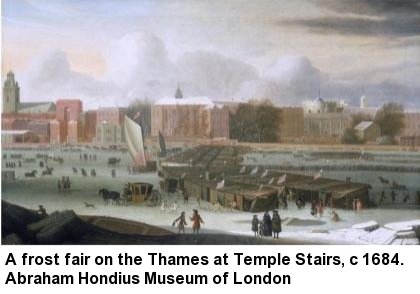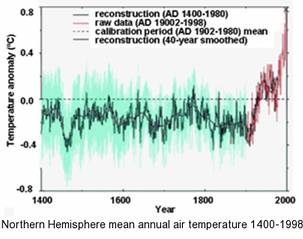Ice Ages | Little Ice Age | Volcanoes

The period AD 1450 to 1850, when temperatures were cooler than the 20th century average, particularly over the Northern Hemisphere, is commonly known as the Little Ice Age (LIA). The LIA was associated with glacial advance in alpine areas. Temperatures and the timing of this advance varied from region to region. Europe was coldest in the 17th century - North America, in the 19th century. Winters were typically much colder than in the 20th century, as evidenced by historical letters and paintings showing, for example, skaters and markets on frozen rivers (see left). Temperature differences in summer were less pronounced. The main causes of the LIA are thought to be the two natural factors that most influence climate today - solar radiation and explosive volcanic eruptions. Fluctuations in solar radiation probably led to cooling on timescales of a century or more, but clustering of volcanic eruptions caused the extreme cold decades of the LIA.

In the time series to the right, the first part of the record (backed by blue shading) is reconstructed from a number of sources, mainly tree rings and ice cores, since there are few reliable measurements in early years. The series are represented as anomalies, that is, the mean temperature over the calibration period (1902-1980) is subtracted from the data. This makes it easier to see when temperatures were above or below "normal" (the dashed line at 0). It is clear from this diagram that, although the LIA was associated with very cold winters causing immense hardship, these often occurred within seemingly trivial mean annual temperature variations. This is important in the context of Global Warming, since it is sometimes argued that the increase in mean annual temperatures of more than 0.5°C, over the last century, is insufficient to be associated with serious climate change impacts. Clearly, there is compelling evidence from the Little Ice Age that this is not the case.
